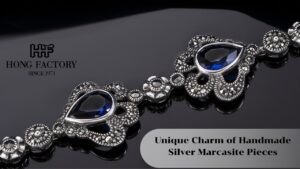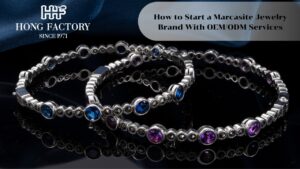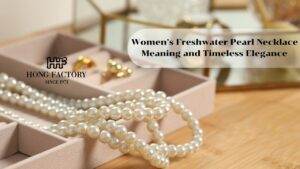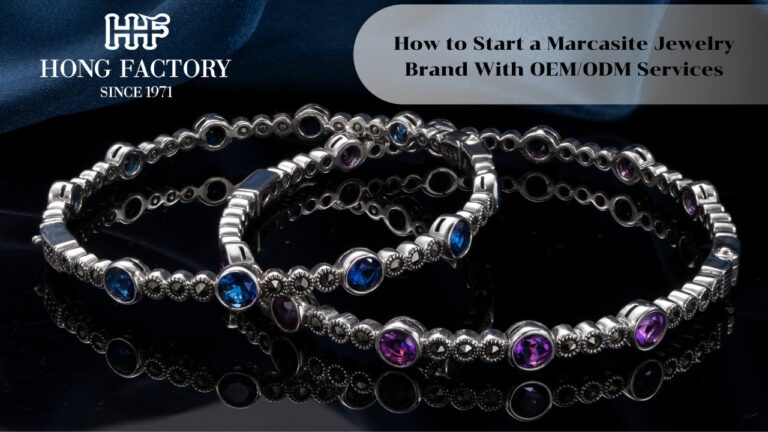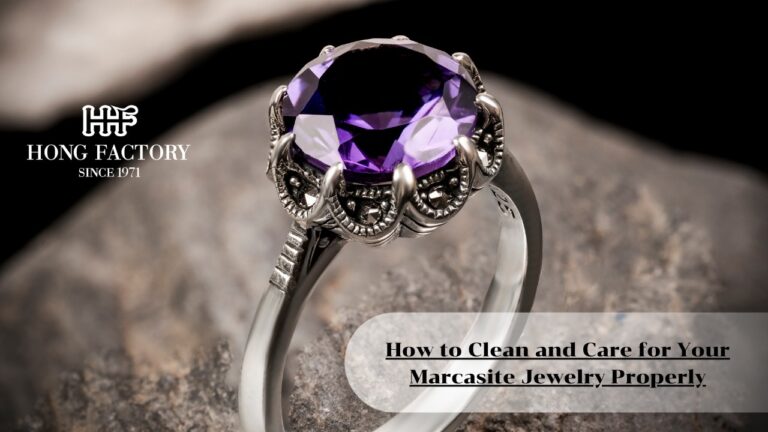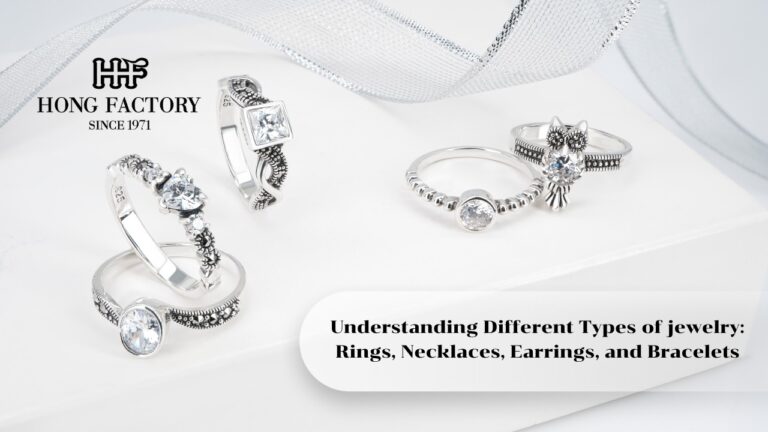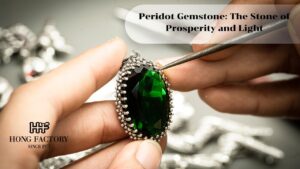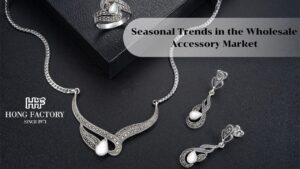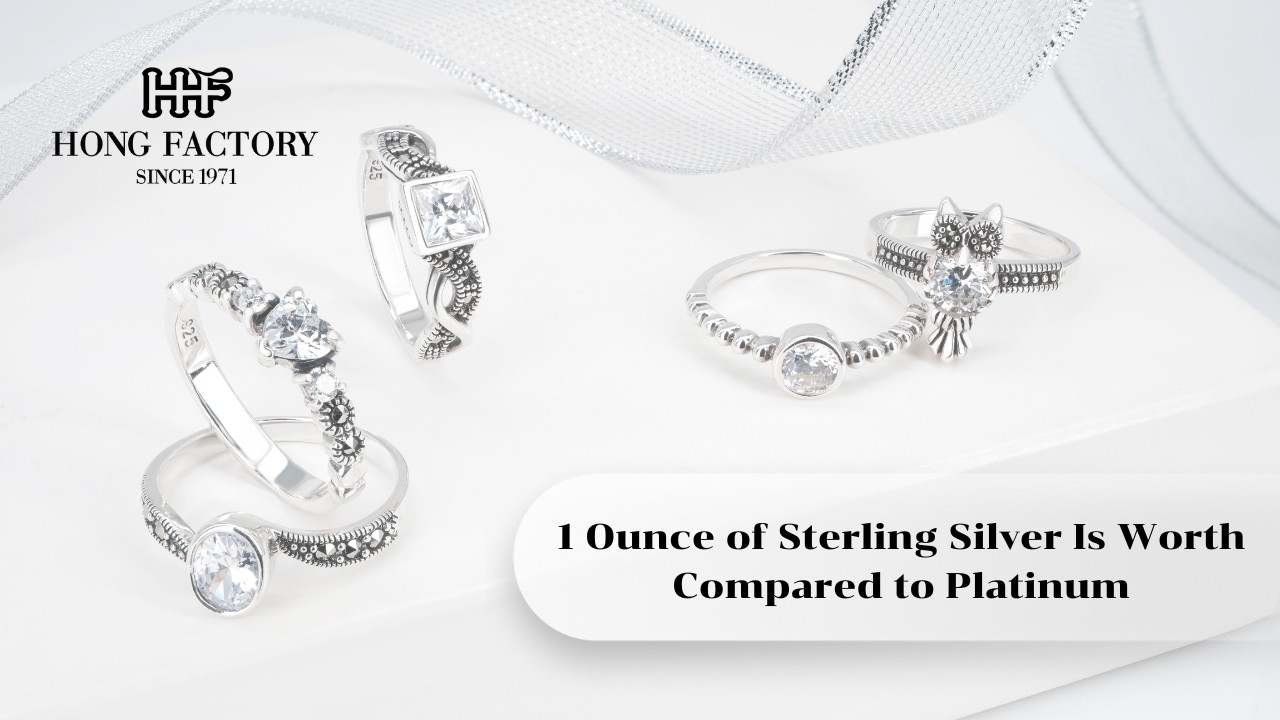
Sterling silver and platinum are two of the most admired precious metals in the jewelry and investment industries. While they share a reputation for elegance and durability, their market values differ drastically. Understanding how 1 ounce of sterling silver compares to platinum helps clarify why silver remains accessible for most consumers, while platinum retains its status as a luxury metal. This article explores their differences in value, use, and market performance in 2025. Jewellery wholesale thailand
Understanding Sterling Silver
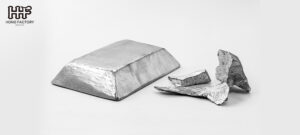
Sterling silver is an alloy composed of 92.5% pure silver and 7.5% copper or other strengthening metals. This balance gives it a bright, reflective finish and a durability ideal for jewelry, flatware, and decorative items. Each genuine piece bears a “925” stamp to certify its quality.
Sterling silver has long been cherished for its affordability and versatility. Unlike pure silver, which is soft and malleable, sterling silver holds its shape well and can be crafted into intricate designs that last for generations.
1 Ounce of Sterling Silver vs. Platinum in Value
When comparing 1 ounce of sterling silver to platinum, the difference in market price is significant. As of 2025:
- Sterling Silver (92.5% pure): Valued between $35–$45 per ounce, depending on silver’s spot price.
- Pure Silver (99.9%): Around $38–$48 per ounce.
- Platinum: Ranges from $1,000–$1,200 per ounce.
This means that one ounce of platinum is worth roughly 25–30 times more than one ounce of sterling silver. The disparity highlights the rarity and industrial importance of platinum, while also emphasizing silver’s affordability and wide accessibility.
Why Platinum Is More Expensive
Platinum’s high price is driven by several key factors:
- Rarity: Platinum is about 30 times rarer than gold and much rarer than silver, with limited global mining sources.
- Industrial Use: Platinum plays a crucial role in catalytic converters, medical equipment, and electronics.
- Durability: It’s highly resistant to tarnish and corrosion, maintaining its luster over decades.
- Density: Platinum is heavier than silver or gold, adding to its perceived luxury and durability.
- High Melting Point: This makes it more challenging and costly to refine and shape.
These characteristics make platinum a premium choice for high-end jewelry and industrial applications alike.
Why Silver Still Holds Value
Despite being less costly, sterling silver maintains steady value due to its beauty, versatility, and wide use in multiple industries. Silver’s combination of aesthetic charm and functional utility keeps it in constant demand.
In addition to jewelry, silver is essential in solar panels, electronics, and medical devices. As renewable energy technology expands, silver’s industrial importance continues to rise helping support its market value even when compared to higher-end metals like platinum.
Visual and Aesthetic Comparison
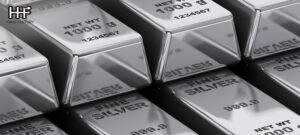
While both metals possess a similar white shine, their appearance differs subtly:
- Sterling Silver: Has a cooler, brighter tone with a reflective finish that tends to oxidize slightly over time (adding vintage charm).
- Platinum: Exhibits a deeper grayish-white hue that maintains its shine longer without tarnishing.
For jewelry wearers, sterling silver offers the same elegant appeal as platinum at a fraction of the cost. It’s an excellent option for those seeking sophistication without the luxury price tag.
Jewelry-Making Considerations
For jewelers, the cost difference between the two metals significantly impacts design and production choices. Sterling silver allows designers to experiment with larger, more creative pieces, while platinum is reserved for exclusive collections and engagement rings.
- Silver Jewelry: Easier to mold, polish, and engrave, making it suitable for intricate or artistic designs.
- Platinum Jewelry: Heavier and denser, preferred for fine settings where durability and prestige matter.
Both metals are hypoallergenic, but platinum’s resistance to tarnish gives it an advantage for heirloom-quality jewelry.
Investment Perspective
From an investment standpoint, platinum is viewed as a rarer and more stable metal, while silver is more volatile but offers greater entry-level accessibility.
- Platinum: A hedge against inflation, often moving inversely to gold and silver in price trends.
- Silver: Offers diversification and industrial-driven demand, which can result in faster price growth during certain market cycles.
In 2025, both metals continue to attract investors, but silver remains the practical option for small-scale buyers seeking tangible assets without high barriers to entry.
Practical Value of Sterling Silver
Although sterling silver doesn’t carry platinum’s prestige, it offers excellent value for everyday use. It’s lighter, easier to maintain, and can be polished or refinished at low cost. With proper care, silver jewelry can last decades and maintain its shine.
For artisans and small jewelry businesses, silver’s affordability allows greater creativity and experimentation in design, giving it a significant advantage in accessibility and artistry.
While platinum dominates the luxury market, 1 ounce of sterling silver continues to hold undeniable worth as a versatile, sustainable, and beautiful material. Its combination of accessibility, functionality, and timeless appeal ensures it remains a staple in both jewelry and industry.
In 2025, the value difference between platinum and silver highlights not competition, but complementarity each metal serving distinct roles. Platinum may symbolize prestige and exclusivity, but sterling silver shines as the metal of choice for creativity, affordability, and enduring elegance.
